Sometimes when an oil painting seems to be dirty or fading, you may be tempted to try your own cleaning technique at home. It is possible to achieve a light clean if the canvas is stable, where the paint layer is not flaking or cracked, for example, removing any dust or very light contaminants upon the canvas. However, you may require professional care if your painting is weak or has embedded layers of dirt and discolouration.
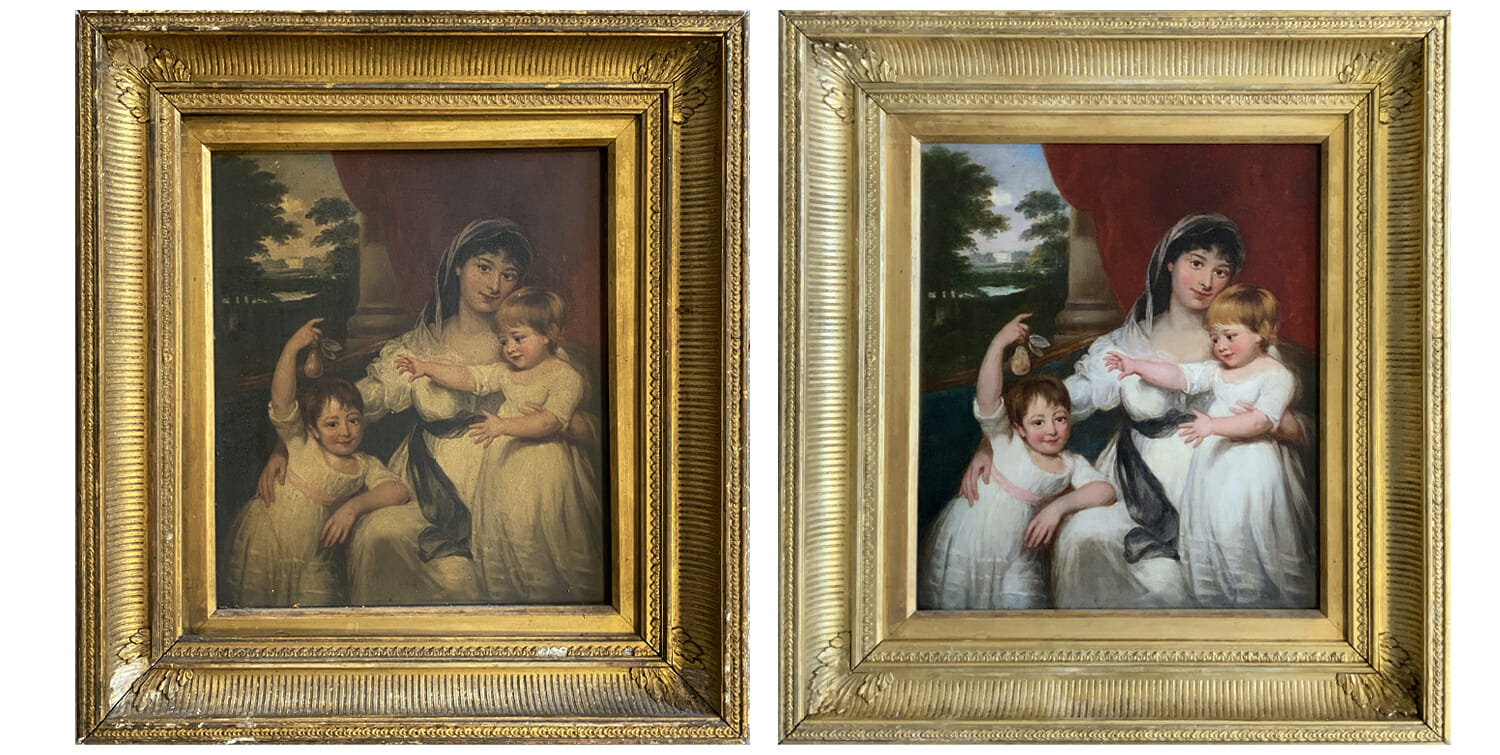
How do I clean a cracked or flaking oil painting?
If cleaning a painting with a cracked or flaking surface at home, the paint layer may risk falling away and further issues may arise. If there are any areas of concern, this needs to be rectified by a trained conservator. In a restoration studio, flaking paint can be consolidated, meaning that it is made stable on the canvas and any risk of it breaking away and deforming the painting is resolved and the work preserved.
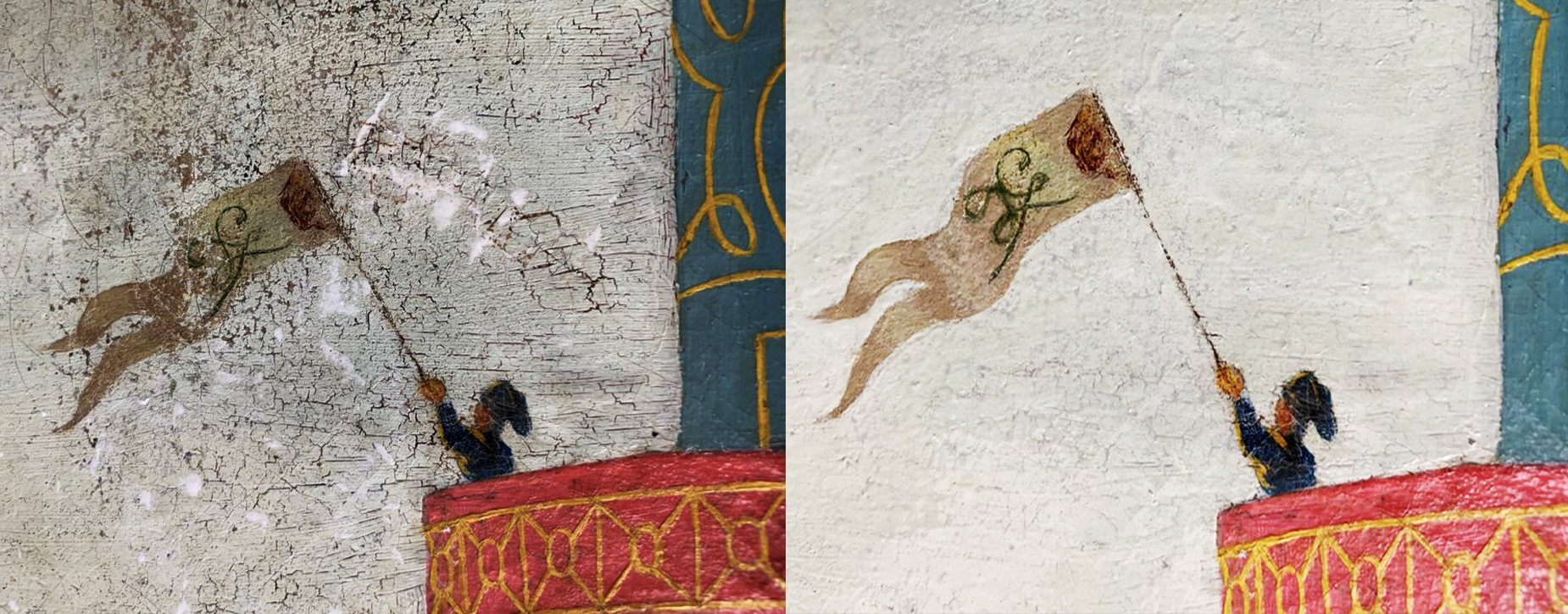
You can learn more about cracked and flaking paint restoration here.
How do I clean a yellowing or dark oil painting?
Cleaning a drastically darkened, yellowed or stained painting may not have the desired effect with home techniques. These are often contaminated with heavy particles from nicotine, thick layers of soot and general debris which have gathered on the painting during its life over decades or centuries.
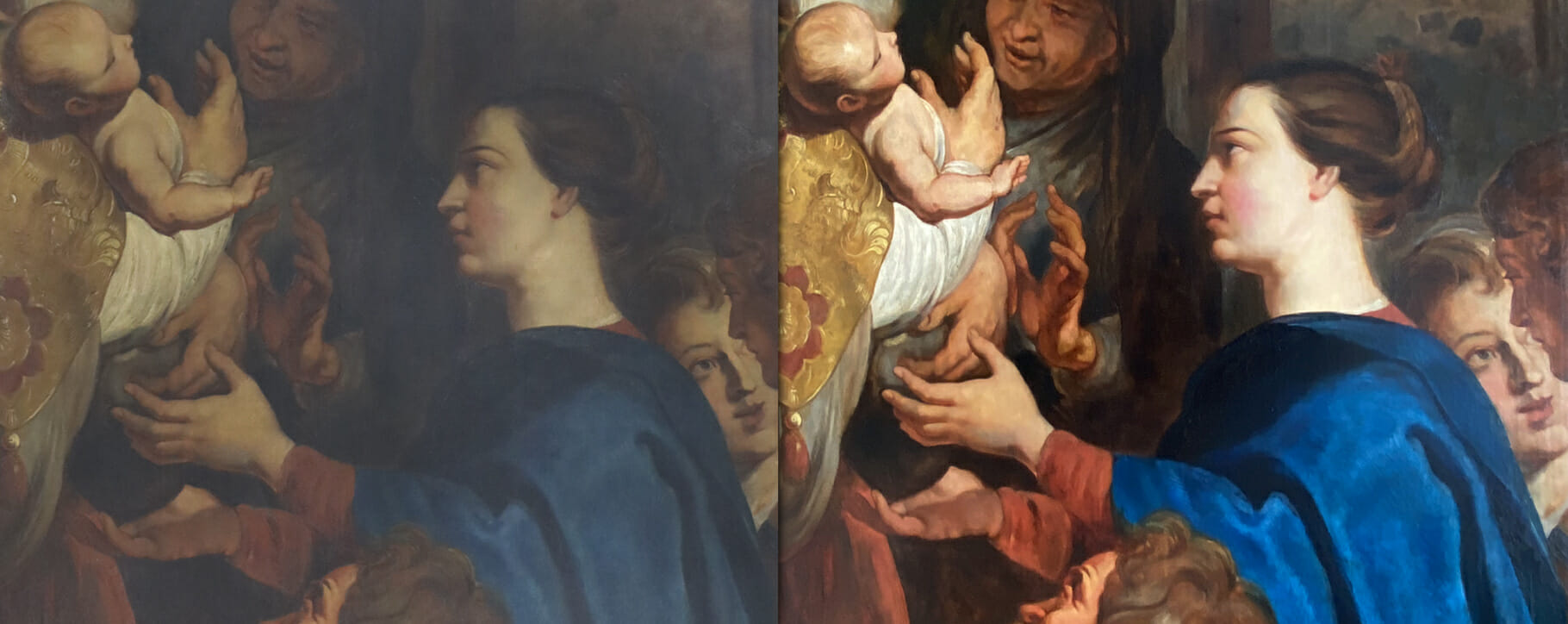
You may wonder, why does my oil painting have a yellow or dark tint to it? Historically, homes were much more prone to these discolouring elements and so older paintings have often faced environments which were unhealthy for their perpetuity. This dirt is sometimes trapped within the drying varnish and can be hard to remove. Luckily, as most oil paintings are varnished, the painting and its original colours are preserved beneath.

We recommend that a full varnish removal is only completed by qualified professionals, as it involves mixing a chemical solution which carefully matches the needs of the individual painting. After the varnish layer has been removed, the canvas can be treated reapplied with a conservation-grade varnish, keeping it clear and free of discolouration into the future.

If you have a painting which you think could benefit from professional varnish removal, please send photographs and dimensions to [email protected] so that we may advise further.
Can I clean a hazy white layer off of a painting?
If your painting has a haze or chalky white layer forming, rather than any of the issues mentioned above, this may be due to damp or humid conditions in storage or at home causing mould upon the paint layer. This is due to a process referred to as bloom, where moisture builds up on the varnish. It can occur above or below the surface of the varnish, often occurring below if it was originally varnished in humid conditions. The painting will require specialist help to remove the bloom and conserve the painting for the future You can read more about treating moisture and mould in artwork here.
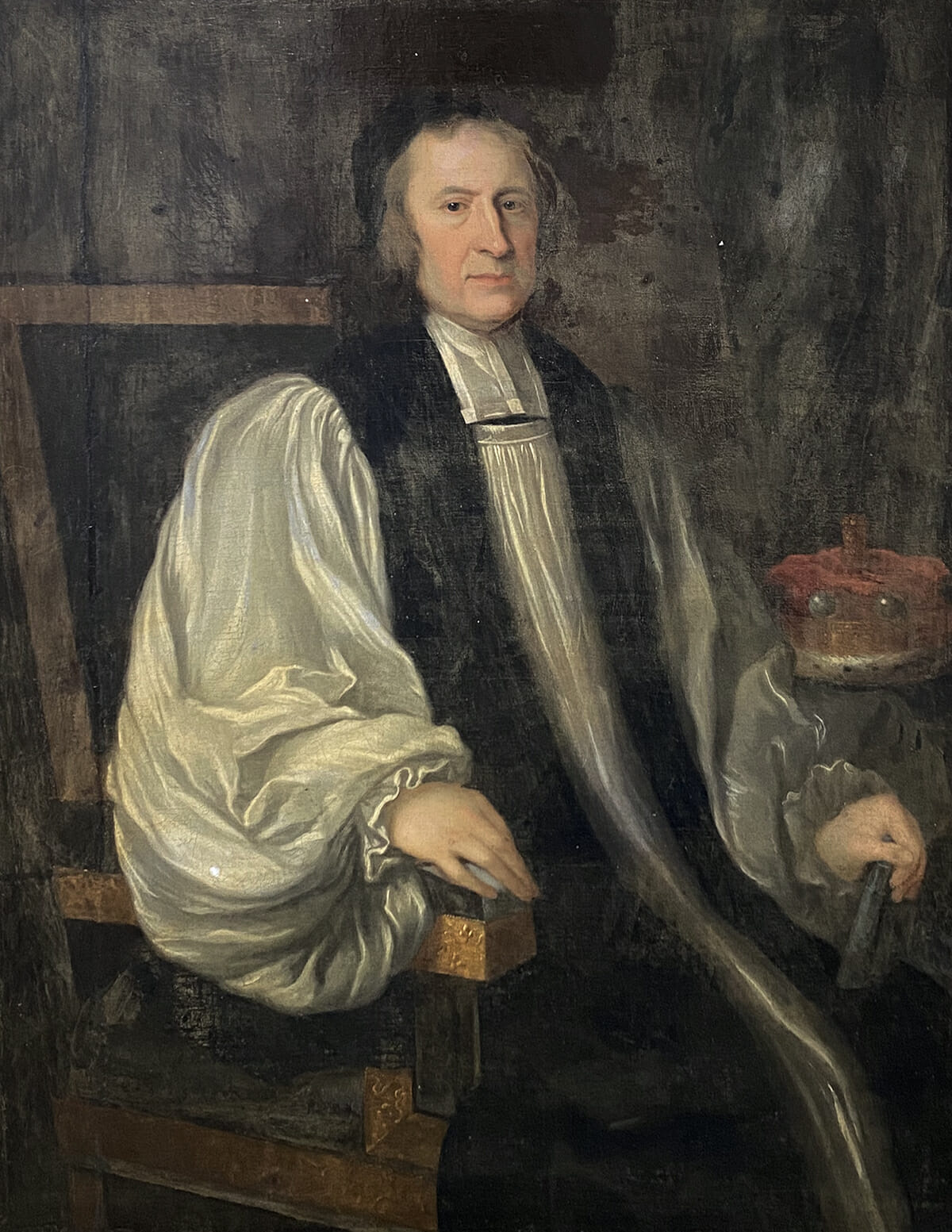

Can you over-clean a painting?
Great care should be taken to not over-clean a painting, as a home attempt to clean and remove varnish could lead to the paint layer being taken away, damaged, faded and in need of re-painting, which would mean the original artwork would be compromised in terms of artistic integrity and original detail.
You may notice that your artwork already has areas of over-cleaning, this may be from past attempts to restore with amateur or very outdated techniques. A conservator will be able to retouch these areas with specialist pigments.
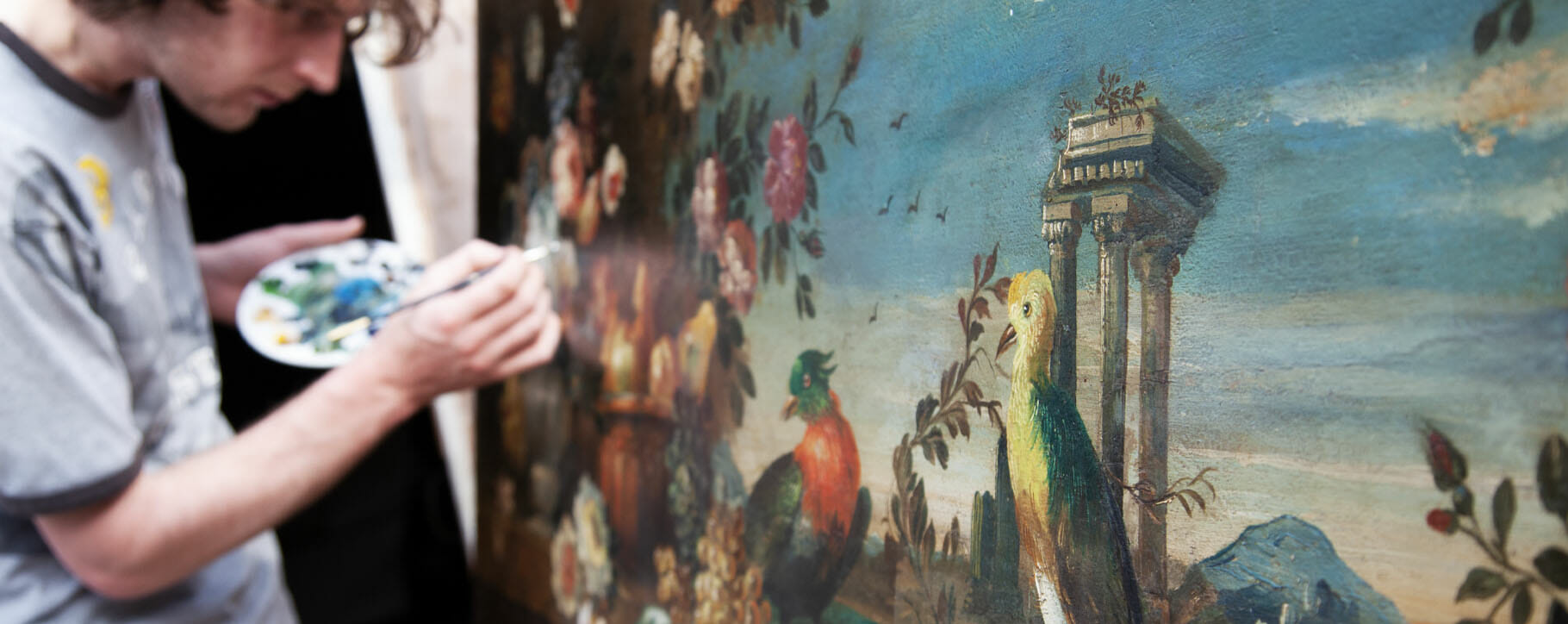
How do I clean a painting on a distorted or dented canvas?
Changes in the texture of canvas, such as the bars causing an indentation on the surface or circular dents forming due to rapid changes in room temperature will need to be professionally treated. The canvas will need to be taken off of the frame and flattened again, this can only be done safely with expert techniques.
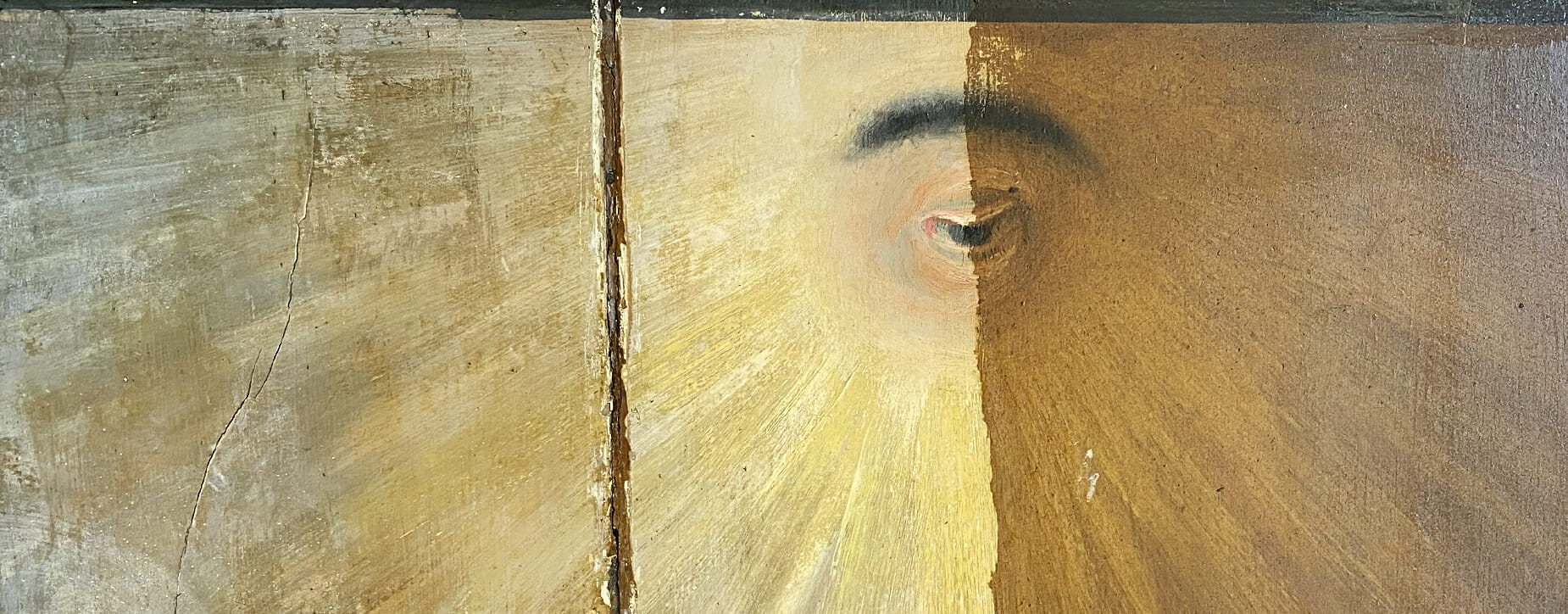
Can I clean a new layer of paint from my oil painting?
Over-painting of details on artwork can happen purposely or accidentally. Throughout history certain areas may have been covered up, old attempts at amateur restoration may be present, or during renovations, paint might have landed on the canvas.
This sort of clean requires expert help, as it will need specialist solvents to ensure the extra layer comes away without damaging the original artwork. Sometimes the varnish layer may need to be replaced, it is highly recommended that this is not attempted at home due to the chemicals involved in the removal of the historic varnish.
If you have a painting suffering from any of the above issues please contact us to find out how our oil painting restoration team can help or a no-obligation quote.






